What video card do I need for a 4K monitor?
Will 4K finally become mainstream in 2019 and what video cards will give you good 4K gaming?
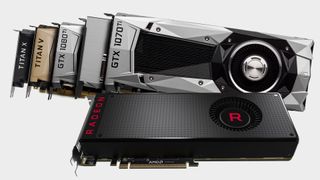
We've been promised 4K capable graphics cards for a number of years now, but only a few current GPUs are actually able to deliver a good gaming experience at 4K. That will likely be changing over the next year as Nvidia's new RTX 2080 graphics cards arrive, but what about right now?
If all you are looking to do is connect to a 4K monitor so that you can take advantage of the higher pixel density in Windows and in your favorite productivity software, most current graphics cards can output to a 4K monitor without any issues, provided they support the resolution and have either an HDMI 2.0 port or DisplayPort 1.2 or later connector (for 4K at 60Hz). But if you want to game without compromises at 4K—especially if you play more graphically demanding games—there are currently only three cards available that deliver, the GTX 1080 Ti, the Titan Xp and the Titan V. If you are willing to compromise on graphics settings then the pool of cards increases for 4K, but not by much.
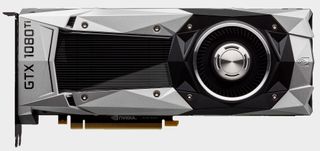
Nvidia GTX 1080 Ti - 60 fps 4K gaming with no compromises
PC Gamer's got your back
The 1080 Ti is currently the only card at acceptable prices that offers consistent 60 fps gaming at high to ultra settings at 4K. The Titan Xp beats the 1080 Ti by a slight margin, and the Titan V beats it by a wide margin, but cost $1200 (£1149) and $3000 (£2,800) respectively, while the 1080 Ti can be found for $650 (£600). You can expect graphically demanding games like Far Cry 5, Kingdom Come: Deliverance, and Assassin's Creed: Origins to run smoothly at 4K without having to sacrifice graphical quality—at least not much. There are a few games that may require further tweaking to hit a steady 60fps.
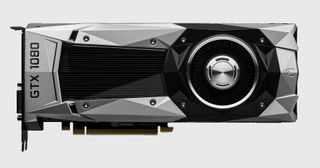
Nvidia GTX 1080 - Good 4K performance with some compromises
If you are willing to bring your game graphics settings down to high or even medium, the GTX 1080 can deliver 4K performance at 60fps. In many games you will still need to turn in-game shadows down and reduce a few other settings, otherwise your fps will tank down to the mid-40s. The GTX 1080 is a good 4K option for well optimized games like Battlefield 1, Doom, and Star Wars Battlefront 2, but it will struggle to keep up with games like Ghost Recon: Wildlands at this resolution.
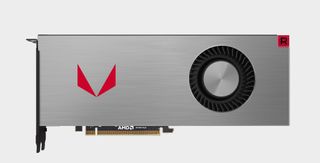
AMD Vega 64 - Good 4K performance with some compromises
The Vega 64's advantage over the GTX 1080 is a higher minimum framerate in most games. While offering similar average framerates compared to its direct competitor, the Vega 64 will more easily maintain 60fps if you can compromise on graphical fidelity. For instance in Battlefield 1, at ultra settings with anti-aliasing turned off and shadows turned down to medium, both the Vega 64 and the GTX 1080 will perform at an average of 65fps, but while the 1080 will still frequently drop down to the high-40s in more graphically demanding areas, the Vega 64 rarely drops below 55fps. Unfortunately the Vega 64 currently sells for a lot more than the 1080, which makes it hard to recommend.
AMD Vega 56 - Good 4K performance with several compromises
If you are willing to play the more graphically demanding titles at lower frame rates then the Vega 56 can be a good option for 4K, especially if you overclock it. The Witcher 3 for instance will run at an average of 41fps on a stock Vega 56 at ultra settings, occasionally dropping down to the mid-20s. In well optimized games like Battlefield 1 the Vega 56 will achieve an average of 55fps at ultra settings, and with some tweaking in the graphics options it can achieve a 60fps average.
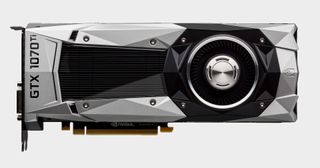
Nvidia GTX 1070 Ti - Good 4K performance with several compromises
The 1070 Ti is Nvidia's answer to the Vega 56 and performs similarly at 4K while currently costing slightly less, making it the current cheapest option for 4K at playable framerates without too many compromises. Even in poorly optimized games like Assassin's Creed: Unity the 1070 Ti can deliver a 30fps average at ultra settings, compared to the Vega 56's 26fps average. Paired with a G-Sync monitor, the 1070 Ti can be a good option for those on a tighter budget looking to play current and future games at 4K.

What about the RTX 20-series?
Nvidia recently announced new cards in the form of the RTX 2070, 2080 and 2080 Ti. At the time of writing not much is know about the real-world performance, but according to Nvidia's own benchmarks both the RTX 2080 and RTX 2080 Ti will be capable of 4K performance at high settings at 60fps and above, and the RTX 2070 looks like it should land somewhere around GTX 1080 Ti levels (give or take).
While the high prices for these cards won't suit everyone's budgets, they will deliver 4K performance at levels that only the 1080 Ti was able to achieve up to this point, and are likely to bring down the price of the other cards in this list too, making 4K gaming more accessible than ever.
The biggest gaming news, reviews and hardware deals
Keep up to date with the most important stories and the best deals, as picked by the PC Gamer team.
Most Popular

